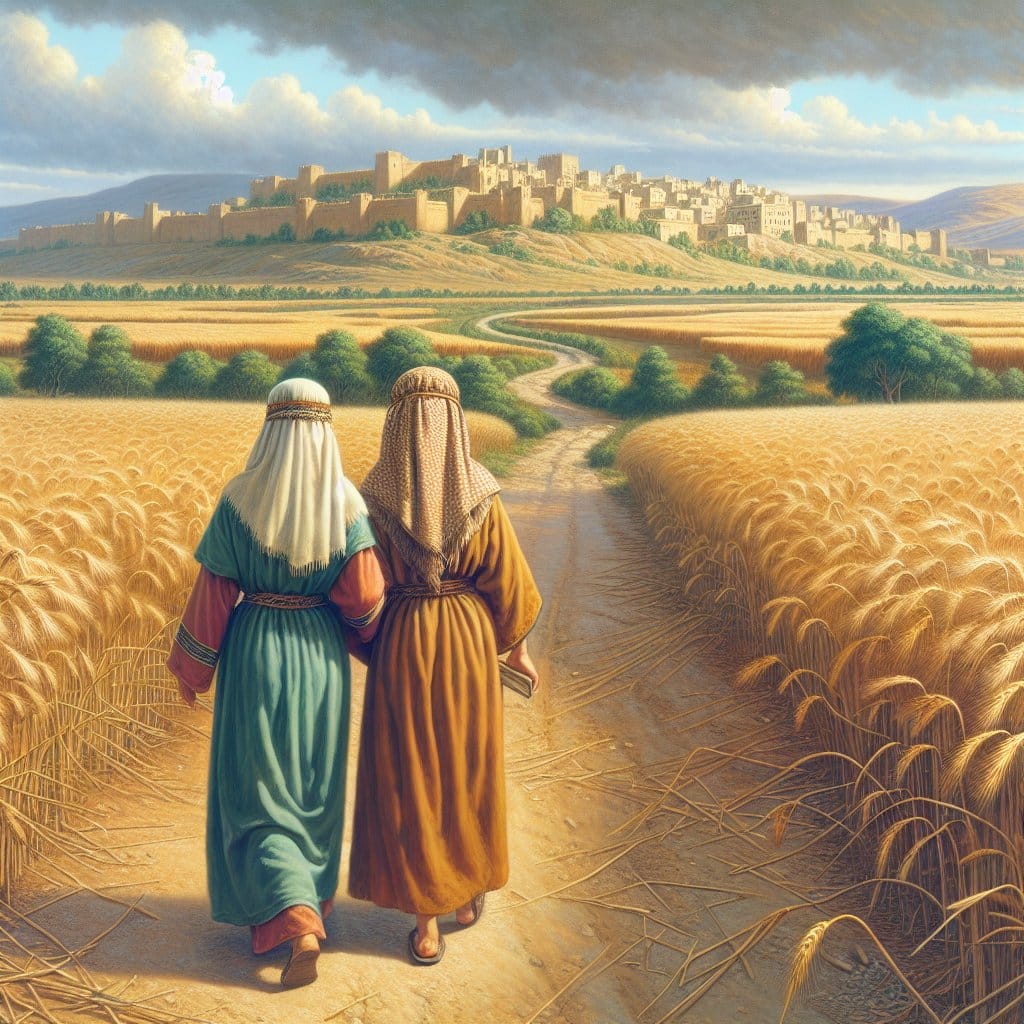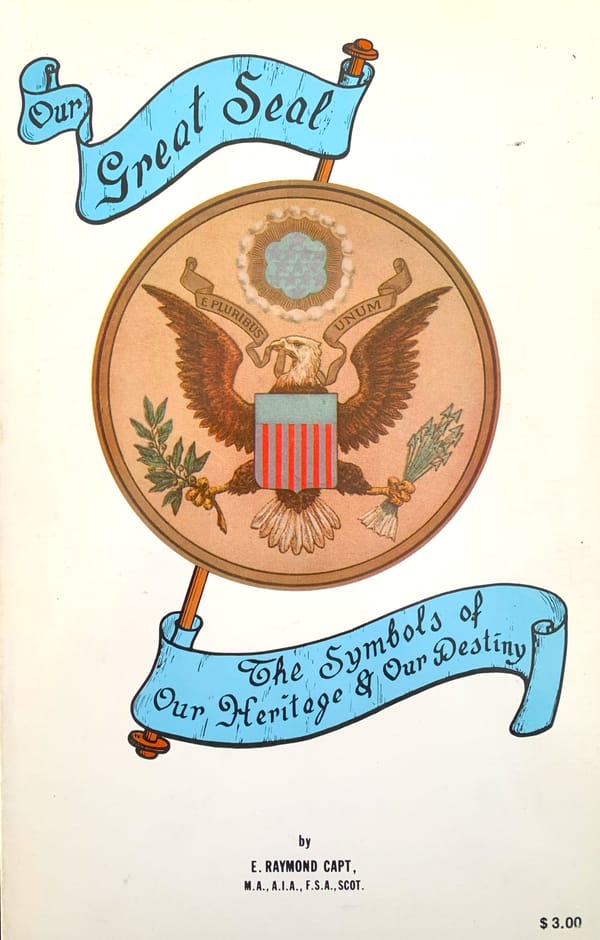Editor’s Note: This series, Barley in the Bible, was initially delivered to a live audience in 1991. It should be noted that it was shortly after I delivered this series of messages, that I began my in-depth study of Bible versions. Hence, the reader will find citations from various English versions in this series.
In reviewing those citations, I found no textual discrepancy which would warrant eliminating them from this work. The results of my multi-year study of Bible versions was eventually presented as a series of 20 lectures to our Stone Kingdom Fellowships. Those 20 lectures on CDs are still available in a pair of albums which are described in the webpage here. On that Order Forms webpage, see “Which Bible? Which Version?”
In chapter one of this series (parts 1-3), we discussed some of the physical characteristics of barley, including how it was—and still is—a very nutritious food. We saw how it is a winter and early spring crop, the first to sprout and grow to maturity and therefore the first grain harvested.
Moreover, we saw that barley is symbolic; it is a type; just as the unblemished lamb is a symbol and a type of the Savior. Likewise, the wave sheath offering is a type. The waving of the sheaf of barley was performed by the priest at this same time of year, the spring, the Passover feast, the Feast of Unleavened Bread.
In chapter one I was quoting from a book called The Spiritual Roots of Barley. [© 1988 by Dr. Mary Ruth Swope, National Preventive Health Services, Inc., P.O. Box 2236, Melbourne, FL 32902.] I want to present some further extracts from it in order to introduce you to some principles we will be seeing in this portion of the study. Any remarks enclosed within brackets like this [ ] are mine. QUOTE:
We through our union with Christ are a first fruits people. It’s worth our time to consider this in terms of sowing and reaping. Both Paul in Galatians 6:7-8 and James, the brother of Lord, in James 1:14-18 warn us that we will reap what we sow.
If we sow a crop of disobedience to God’s laws on the realm of nutrition and health, we are not likely to make a very perfect or lively sacrifice, are we? We won’t even be in fighting condition when the enemy tries to steal a march on us. The lust of the body will cause us to reap a harvest of destruction as scripture warns us.
If on the other hand, we are willing to sow good seed to our bodies, eating what is not only physically but spiritually good for us, we will reap a double blessing. Our bodies will be perfected as a suitable temple for the living God and we will be in excellent condition should attack come from our enemies.
In doing this, we will be like the wise virgin or the good servants in the Master’s parable and like barley, we will be available and nourishing to those around us. END QUOTE
That is a key principle. If we are—or some of us are, you can categorize yourself—if I am striving to be a member of the Firstfruits Company, the Overcomers, the Barley Company, one of those who come to maturity early, then I think it is the function of the Firstfruits Company to be barley, to be the food, to provide nourishment for the rest of the church. So are we doing that? Let each judge himself.
It is easy for us to see, that among professing Christians, there are several distinct levels of commitment to discipleship. As one pastor put it, there are curious disciples, convicted disciples and committed disciples. Let’s see how these types can be compared to various grains.
For example, take rye first and compare it to being a curious disciple. This type of inferior wheat, as it is often called, is not the kind that is in great demand. It is easily threshed but comes to harvest later than the other grain since it requires all of the latter rain in order to mature.
Do you see the spiritual significance of that? There are a lot of people who fit this category. They are just kind of curious, who perhaps have only an intellectual curiosity. It is going to take a lot of the latter rains before they mature. It would also be appropriate to speak of the autumn crops in the Bible—the grapes, olives and other orchard fruits as symbolizing those needing much latter rains.
Then there is wheat, the grain that is called the staff of life. It is always threshed and ground before it can best be used. It can take being whipped, flailed and tossed about without damage. It is even ground by being bruised, crushed and reduced to powder. The wheat people make up the greater portion of the consumed grain. They represent the convicted disciples who are the real backbone of Christianity.
In terms of numbers in the nominal Christian world, most of the people fall into the wheat category. They are part of the Wheat Company. They represent the Pentecostal church. We are not referring to the denomination or sect called “Pentecostals,” nor “charismatics” in general, although they all are a part of it.
By “Pentecostals” in this study, we mean the Christian church in general. From the Exodus to Christ was the Age of Passover. From the Pentecost in 33 A.D. to just about the present time has been the Church Age, the Age of Pentecost.
It has been characterized by an “in-part” anointing. It is a mixture of wheat with leaven. The good with the bad. It speaks of imperfection still in Christians individually and the church in general.
Thus, the Wheat Company requires beating and grinding and baking to be acceptable as an offering to Yahweh. Now comes the best for last, ... and the last shall be first. God has a small group of barley people who are truly the committed ones. Exodus 21:5 describes these bond slaves as those who love their masters so much that they want to become a volunteer, permanent slave. They are the ones who only require winnowing.
“Winnowing” is the process of separating the barley grain from the chaff. It is done by the harvester using a winnowing fork (similar to a pitchfork) and throwing it up in the air and letting the wind blow the chaff away. Barley does not require the threshing, beating, bruising, and crushing like the wheat does; only winnowing.
As opposed to being beaten, these barley people just need to be exposed to the wind of the Holy Spirit to have the waste material falloff and blown away. This speaks of the superior Christian character quality found in the Barley Company.
They are found in all eras of history. The Barley Company, like the natural barley grain, also thrives in cold climates. We are not talking about the arctic; we are talking about spiritually unfriendly circumstances. Can you relate to that?
Being a Christian Israel* believer does not automatically make one a member of the Barley Company, of course, but you can certainly relate to that “cold climate,” can you not? When you try to teach others of their biblical identity, you get that cold look, that cold response.
If you are able to continue to grow and thrive, despite that kind of response, if you are able to survive and go on, without lots of rain. i.e., without lots of spiritual watering from a typical local church congregation, then perhaps God has called you for the special calling to be part of the Barley Company.
Most of the Christian Israel churches are home churches, just as early Christianity started. And just as the natural barley grain is resistant to various fungi, mold, and other blighting diseases, so the very elect of the Barley Company are resistant to the conditions of disease and filth in their environment.
They want to be pure, holy, righteous, yes—even perfect as is their Heavenly Father is perfect. (N.B. That is a lifelong task and we may make great progress, by His grace, but because we still inhabit mortal bodies, we shall never achieve that absolute perfection in this life.)
Let’s look specifically now at one story in the Scriptures where barley is prominent: the book of Ruth. In later chapters in this series we will be studying barley as it relates to the prophet Elisha and the poison stew, and certainly Jesus’ miracles of the loaves and the fishes because the loaves were barley loaves.
Furthermore, there is the story in 2 Samuel where seven sons of Saul were executed by the Gibeonites and a curse was lifted. Why do you suppose that there is a little phrase in that story that this happened at the time of the barley harvest?
I think that is significant or the Lord wouldn’t have directed it to be there by his Holy Spirit. We will look at these and more in later studies on barley in the Bible.
When I was in high school and I was studying English literature and American literature, I hated short stories. But I never saw the book of Ruth among the short stories. I think one of the reasons why a lot of young people develop a distaste for literature is because they are assigned the wrong things to read.
This story in the book of Ruth, just four little chapters, is such a poignant story! If you really immerse yourself in the story, it can actually bring you to tears. I know most of our readers are familiar with it, but to set the stage and to refresh our memories, I want to read the entire first chapter, and then we will make comments as we go. I am going to quote from the New International Version (NIV) for easier comprehension of the gist of the story. All emphases and comments within [brackets] are mine.
Ruth 1: 1-22: In the days when the judges ruled, [and that’s important,] there was a famine in the land, and a man from Bethlehem in Judah, together with his wife and two sons, went to live for a while in the country of Moab.
The man’s name was Elimelech, his wife’s name Naomi. The names of his two sons were Mahlon and Chilion. They were Ephrathites from Bethlehem Judah and they went to Moab and lived there.
Now Elimelech, Naomi’s husband, died and she was left with her two sons. They married Moabite women. One named Orpah and the other Ruth. After they had lived there about ten years, both Mahlon and Chilion also died and Naomi was left without her two sons and her husband.
When she heard in Moab that the Lord had come to the aid of his people by providing food for them, Naomi and her daughters-in-law prepared to return home from there. With her two daughters-in-law, she left the place where she had been living and set out on the road that would take them back to the land of Judah.
Then Naomi said to her two daughters-in-law, go back each of you to your mother’s home. May the Lord show kindness to you as you have shown to your dead and to me. May the Lord grant that each of you will find rest in the home of another husband.
Then she kissed them and they wept aloud and said to her ‘‘We will go back with you to your people,” but Naomi said “Return home, my daughters, Why would you come with me? Am I going to have more sons? Who could become your husbands? Return home my daughters, I am too old to have another husband.
Even if I thought there was still hope for me, even if I had a husband tonight and then gave birth to sons, would you wait until they grew up? Would you remain unmarried for them? No, my daughters, it is more bitter for me than for you because the Lord’s hand has gone out against me.”
At this they wept again, then Orpah kissed her mother-in-law goodbye, but Ruth clung to her. “Look,” said Naomi, ‘‘Your sister in law is going back to her people and her god, go back with her.”
Ruth said “Entreat me not to leave thee, or return from following after you, for where you go, I will go and where you stay, I will stay. Your people will be my people and your God will be my God. Where you die, I will die and there I will be buried. May the Lord deal with me, be it every so severely, if anything but death separates you and me.”
When Naomi realized that Ruth was determined to go with her, she stopped urging her. So the two women went on until they came to Bethlehem. When they arrived in Bethlehem, the whole town was stirred because of them and the women exclaimed ‘‘Can this be Naomi?”
[I suppose she came back looking rather haggard and rather exhausted and with perhaps a few more wrinkles in her face. And they said “Look! Is that really Naomi? She really looks in bad shape.”]
“Don’t call me Naomi,” she told them, [Naomi means pleasant] Call me Mara, [which means bitter] because the Almighty has made my life very bitter. I went away full, but the Lord has brought me back empty. Why call me Naomi? The Lord has afflicted me. The Almighty has brought misfortune upon me.
So Naomi returned from Moab accompanied by Ruth the Moabitess, her daughter-in-law, arriving in Bethlehem as the barley harvest was beginning. [End of Ruth 1:1-22 from the New International Version]
(To be continued.)
___________________________________
* By the term “Christian Israel” we are referring to those of us who have come to understand that the Anglo, Saxon, Keltic, Scandinavian, Germanic, and numerous other related peoples, “originally” from European “Christendom” are the descendants of the 12 tribes of Jacob-Israel who have been divinely-blinded to their own identity as God’s chosen people. Israelites who became the Christian nations of Europe in the centuries A.D.
Of course, they/we are not originally from Europe but from ancient Israel, many having migrated many centuries before Christ through the Caucasus mountains, and hence became known as the Caucasian people who in part populated Europe.
That blindness (in part) to our own identity has now almost run its course and many are awakening. We must also add the following disclaimer to those to whom this is a new concept.
Because new readers might immediately have the (programmed) knee-jerk reaction to this idea, by thinking that (a) we are “racists, white supremacists,” etc. (hogwash); and they might also conclude that we teach/believe that (b) only true, genetic Israelites can be saved (double hogwash), and/or (c) that true Israelites are automatically saved; i.e., “saved by race” (triple hogwash).
We have never taught any of that hogwash, but we do recognize that there are a few—very, very few individuals here and there who do teach our Christian Israel identity and may teach any or all of (a), (b), and (c) above. Unfortunately, those few provide the “evidence” for the fake news and NGOs (such as the Southern Poverty Law Center) to smear us all with a broad brush.
But if readers avail themselves of the material we make available, they might also be given to learn that what we teach makes sense, both biblically and historically.
~END~




